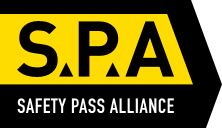Firm sentenced after worker’s arm severed
- Date:
- 28 July 2016
A Bristol based manufacturer of concrete products has been fined after a worker’s arm was torn off when it was pulled into the rotating tail pulley of a conveyor belt.
Bristol Crown Court heard the injured man was making adjustments to a misaligned conveyor belt at Concrete Fabrications Ltd plant in Henbury, Bristol on 18 May 2015.
The court heard that to do this, the man who does not wish to be named, had to adjust tensioning rods which were located inside the machine’s guards, in close proximity to the conveyor belt and rotating tail pulley.
The worker noticed that aggregate had built up on the tensioning rod and he tried to knock off the material with a hammer so he could use a spanner to adjust the rod. However, the hammer was dragged into the rotating machinery along with the employee’s arm which was severed between the shoulder and the elbow.
The Health and Safety Executive (HSE), prosecuting told the court that Concrete Fabrications Ltd should have had adequate guards on dangerous parts of machinery.
It said clear procedures should exist regarding maintenance and adjustments of machinery and arrangements should be in place to ensure that machinery is not run without the necessary guarding in place, and that clear isolation and lock off procedures exist.
An unsafe system of work existed for the maintenance of machinery, in so much that the dangerous moving parts of the machine were exposed during maintenance operations. A sufficient risk assessment would have identified the risks associated with tracking conveyor belts, and identified appropriate control measures.
Concrete Fabrications Ltd of Cole Road, St Phillips, Bristol, United Kingdom, pleaded guilty to breaching Section 2(1) of the Health and Safety at Work Etc. Act 1974 and was fined £100,000 with £7758 costs awarded to HSE.
Speaking after the hearing, HSE inspector Matthew Tyler said: “Company’s need to ensure the risks associated with maintenance tasks are adequately assessed, and effectively controlled, through adequate guarding of dangerous parts of machinery, and the existence of clear robust procedures in respect of maintenance and adjustments of machinery, including isolation and lock off requirements. The consequences of not doing this are clear to see here today.”
Notes to Editors
- The Health and Safety Executive (HSE) is Britain’s national regulator for workplace health and safety. It aims to reduce work-related death, injury and ill health. It does so through research, information and advice, promoting training; new or revised regulations and codes of practice, and working with local authority partners by inspection, investigation and enforcement. www.hse.gov.uk[1]
- More about the legislation referred to in this case can be found at: www.legislation.gov.uk/
 [2]
[2] - HSE news releases are available at http://press.hse.gov.uk



















